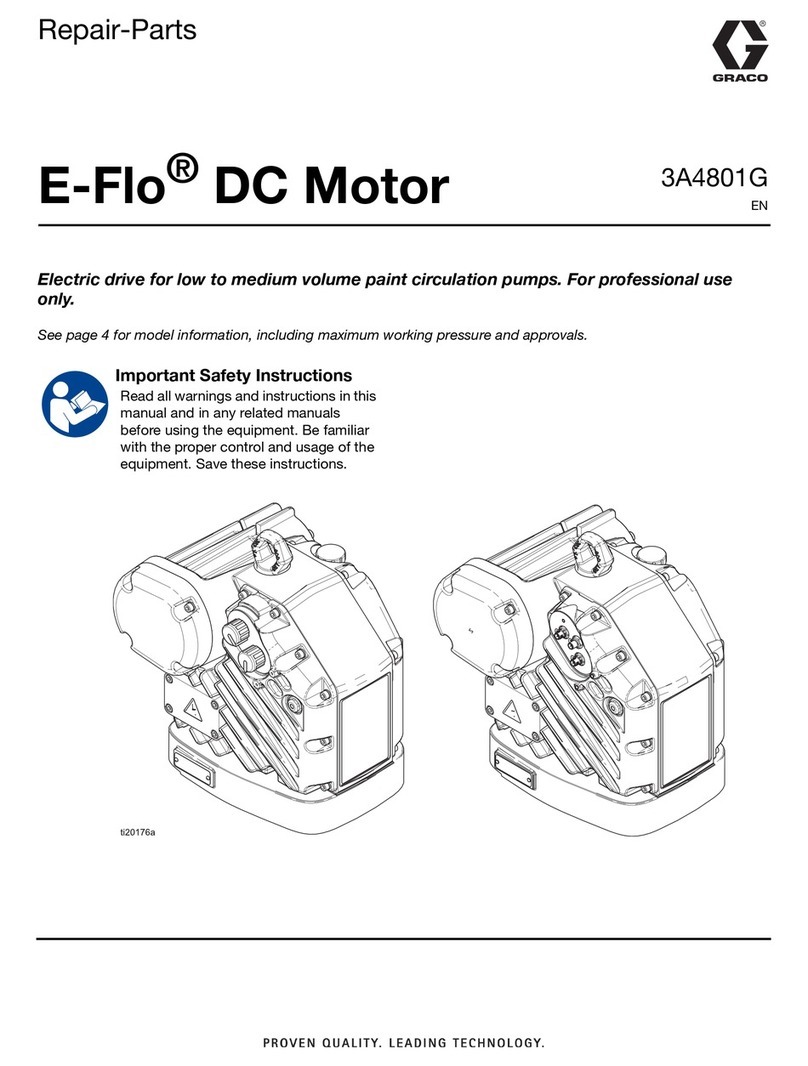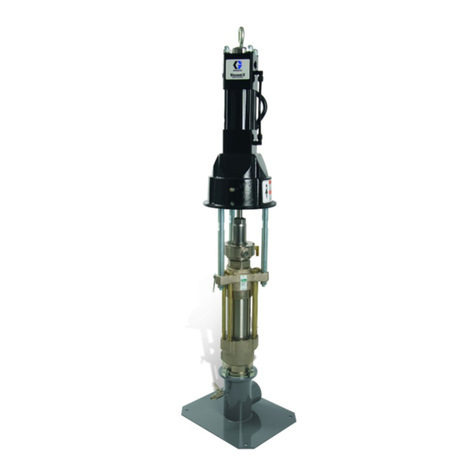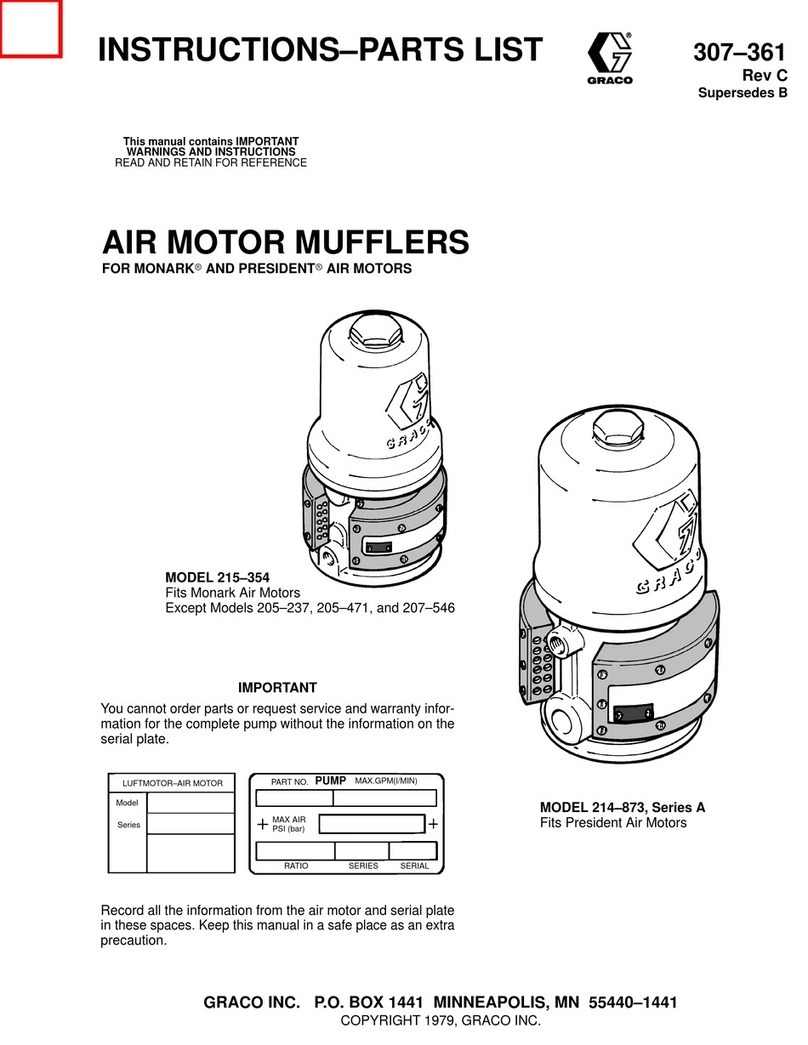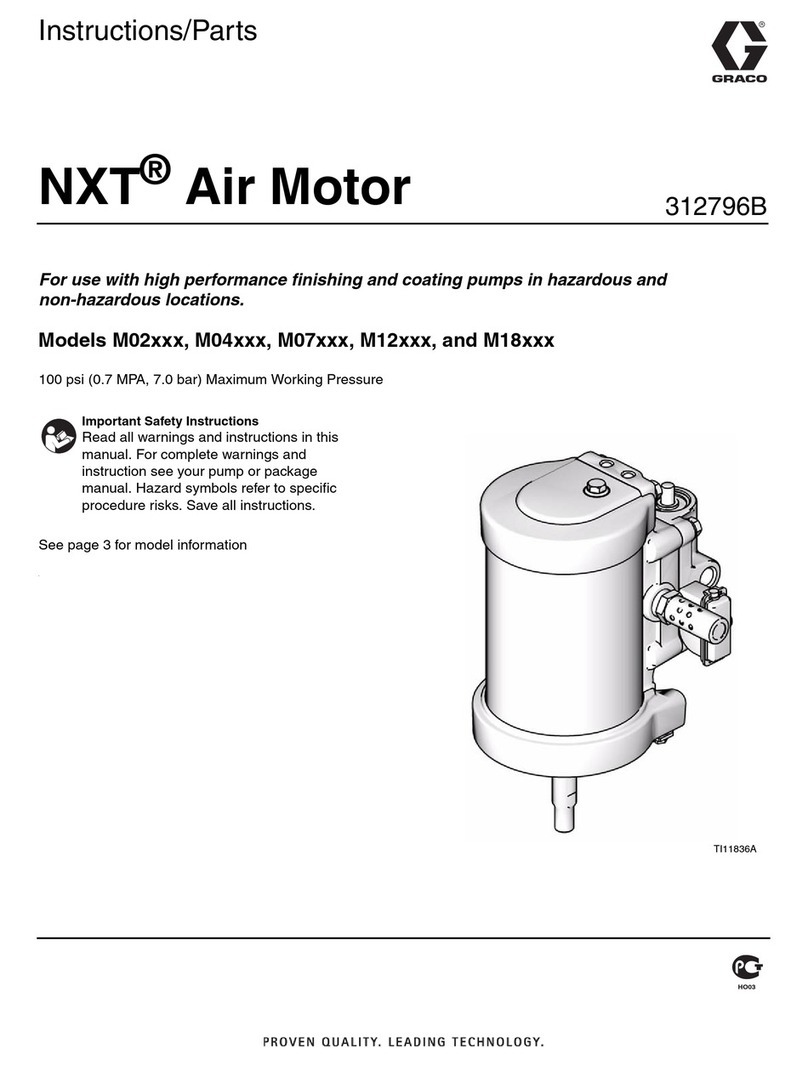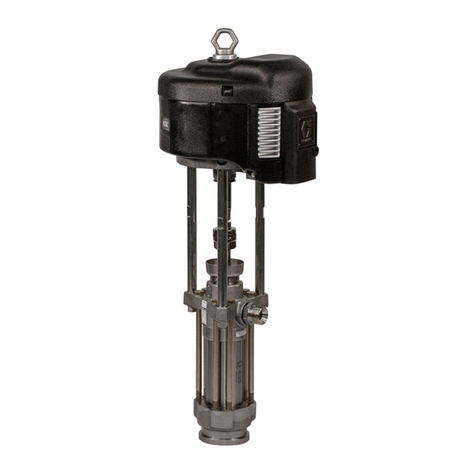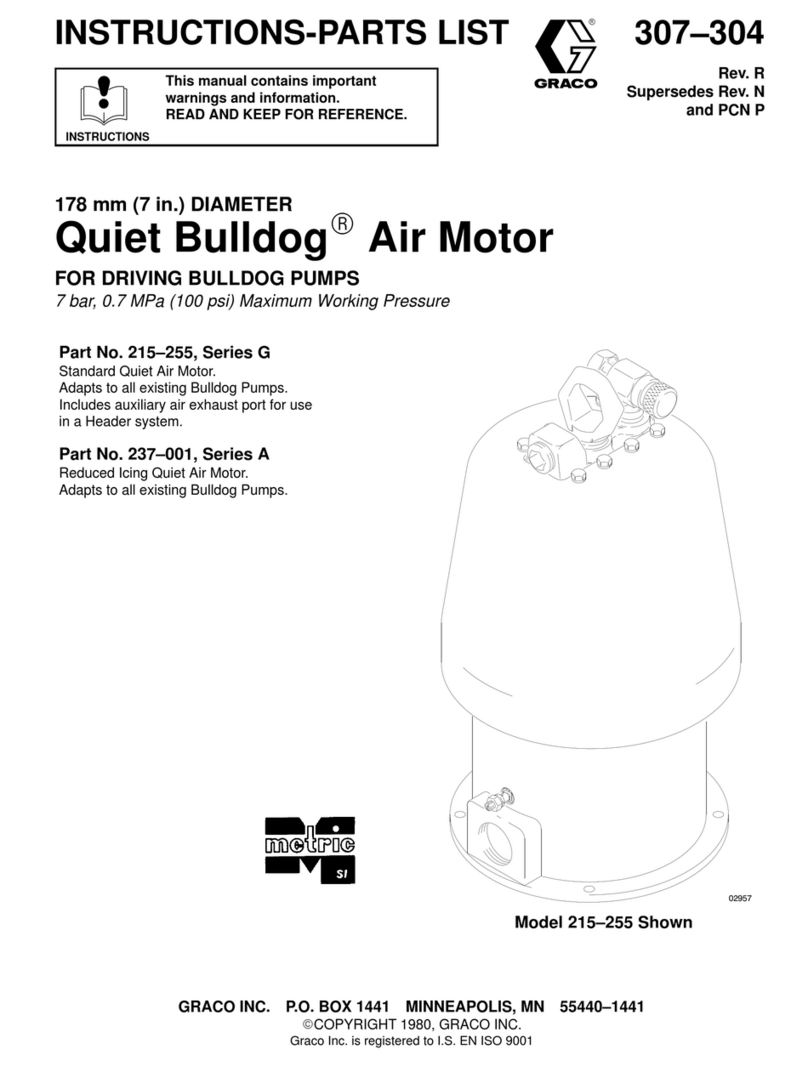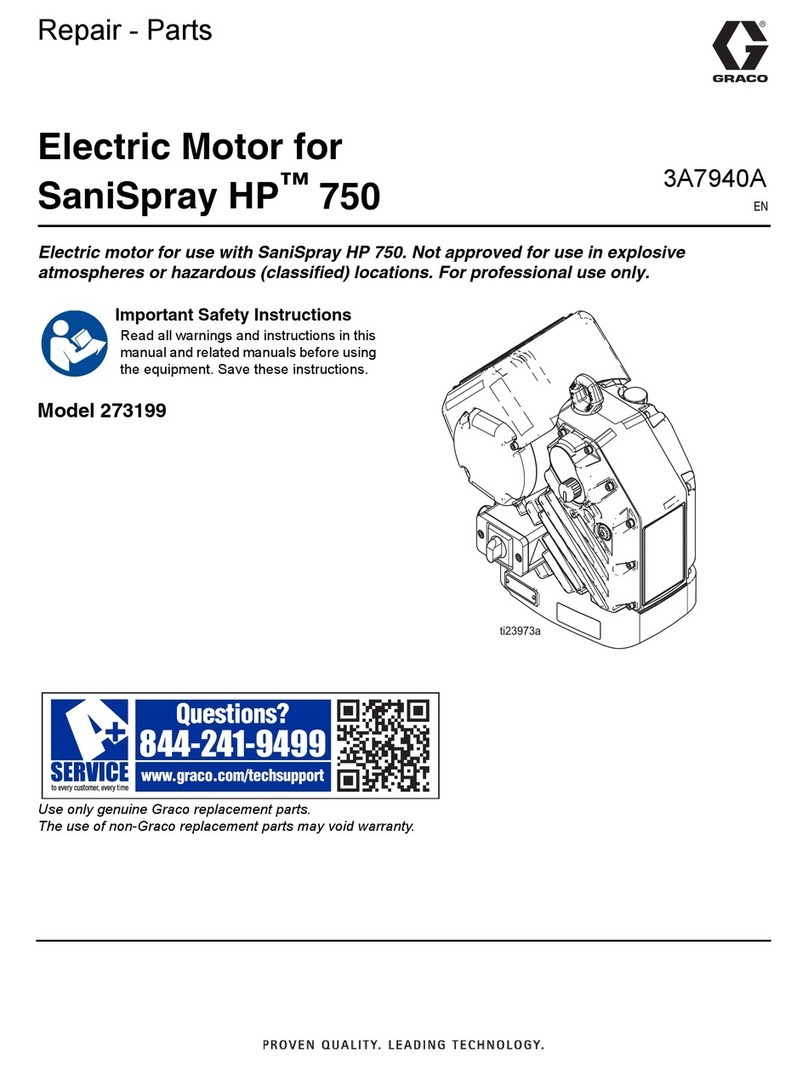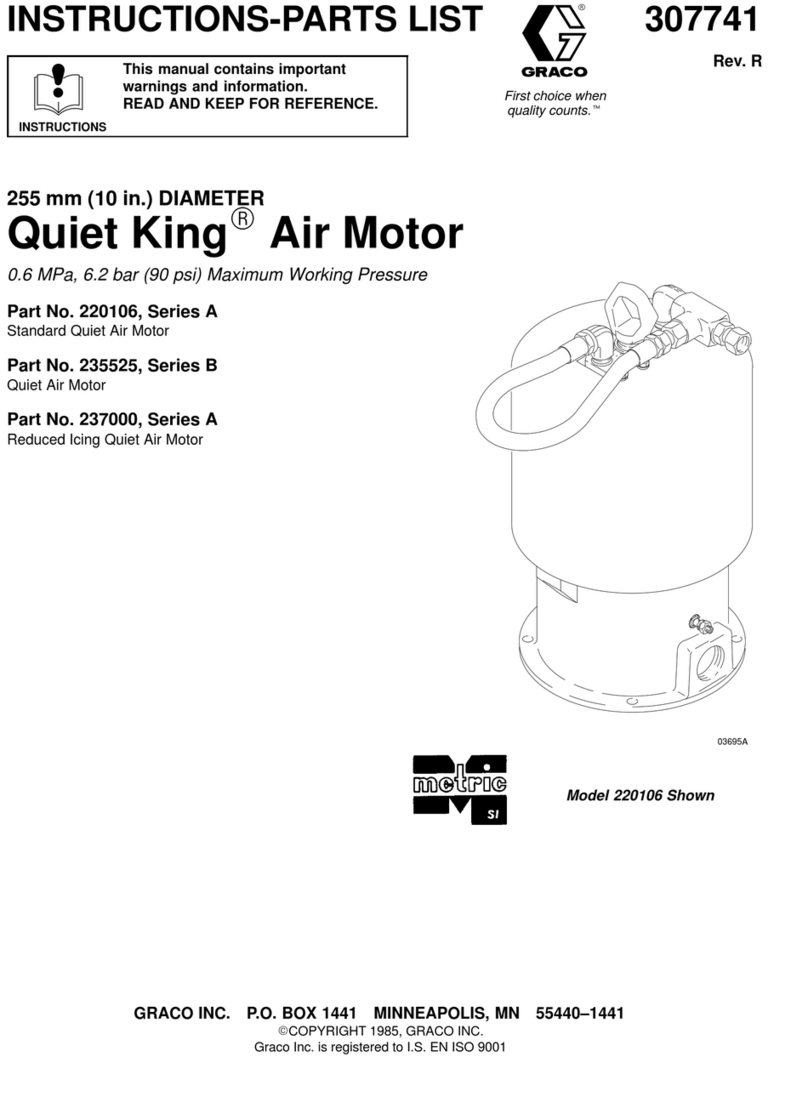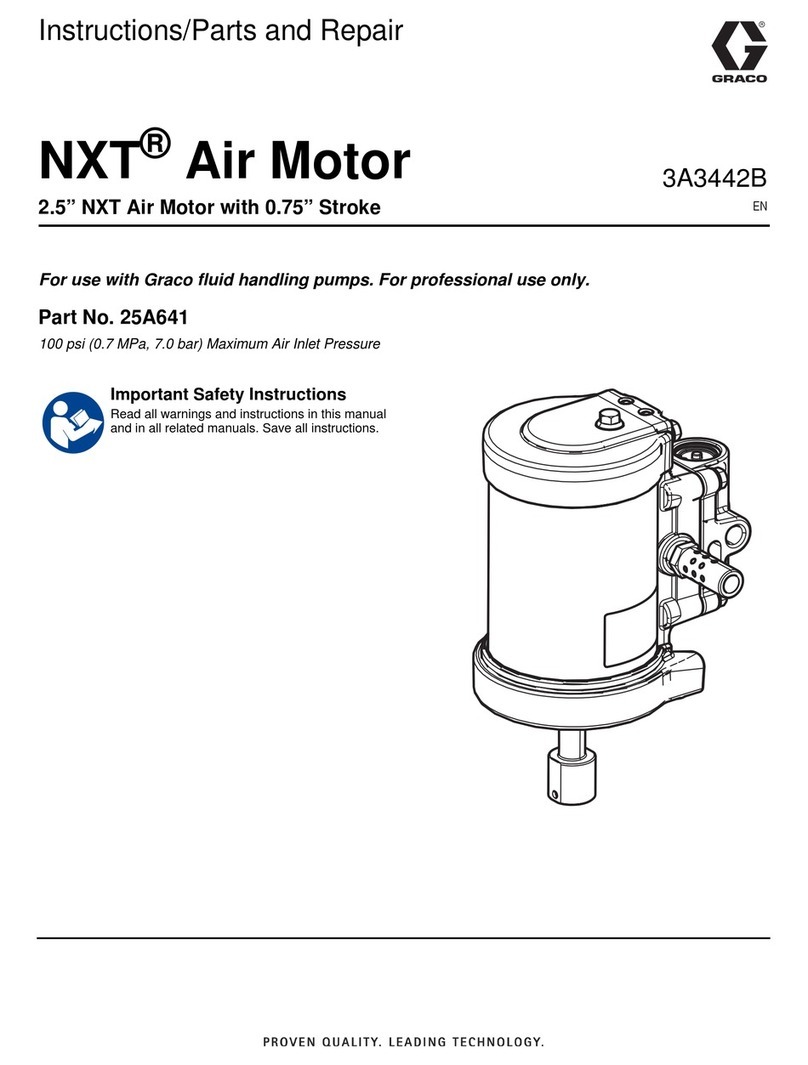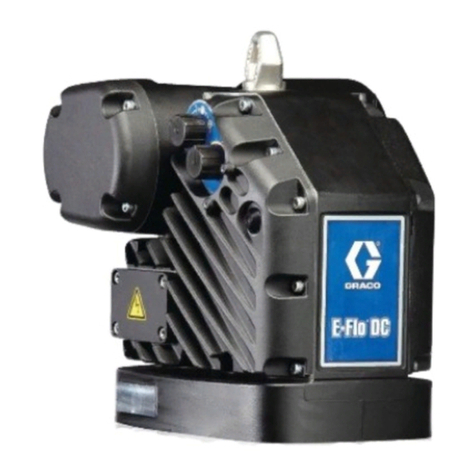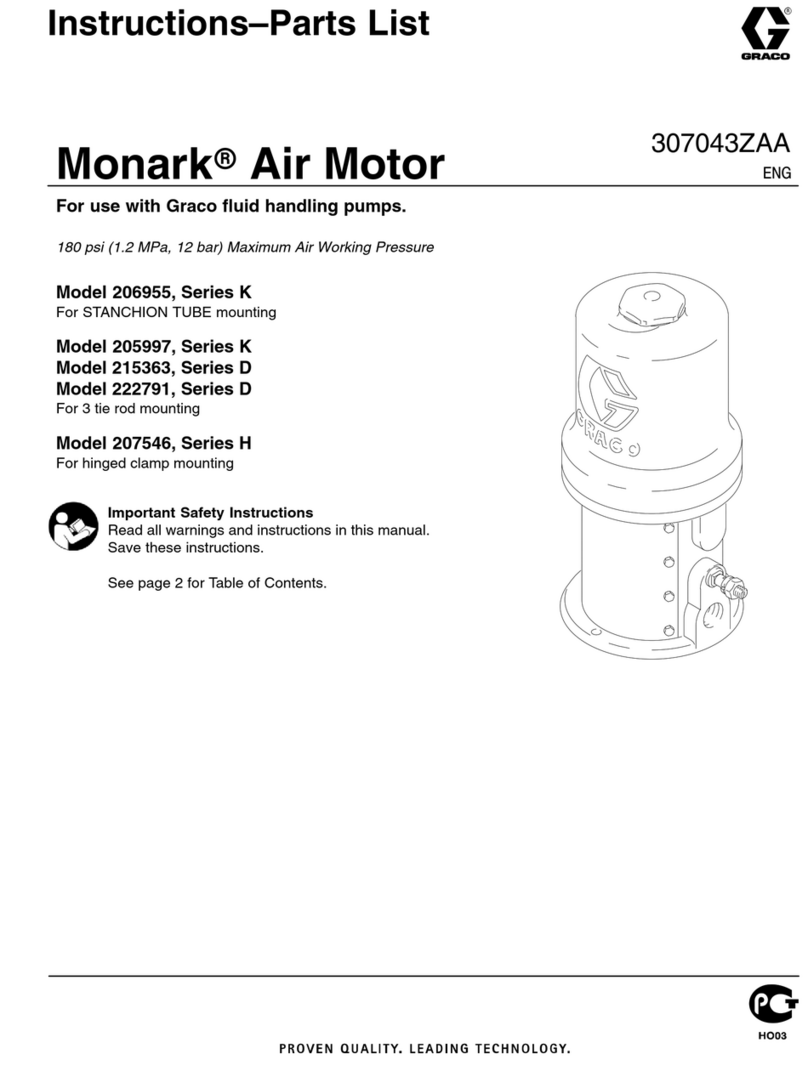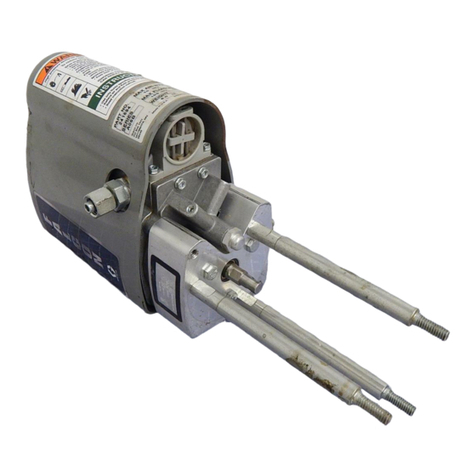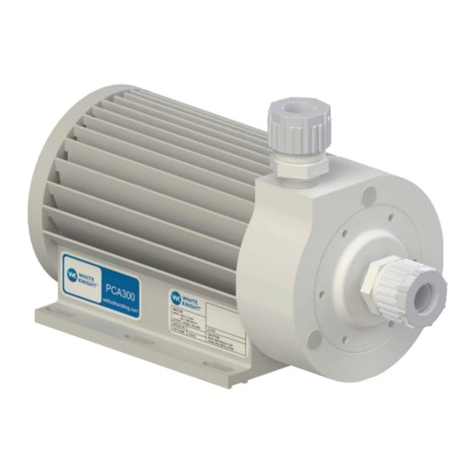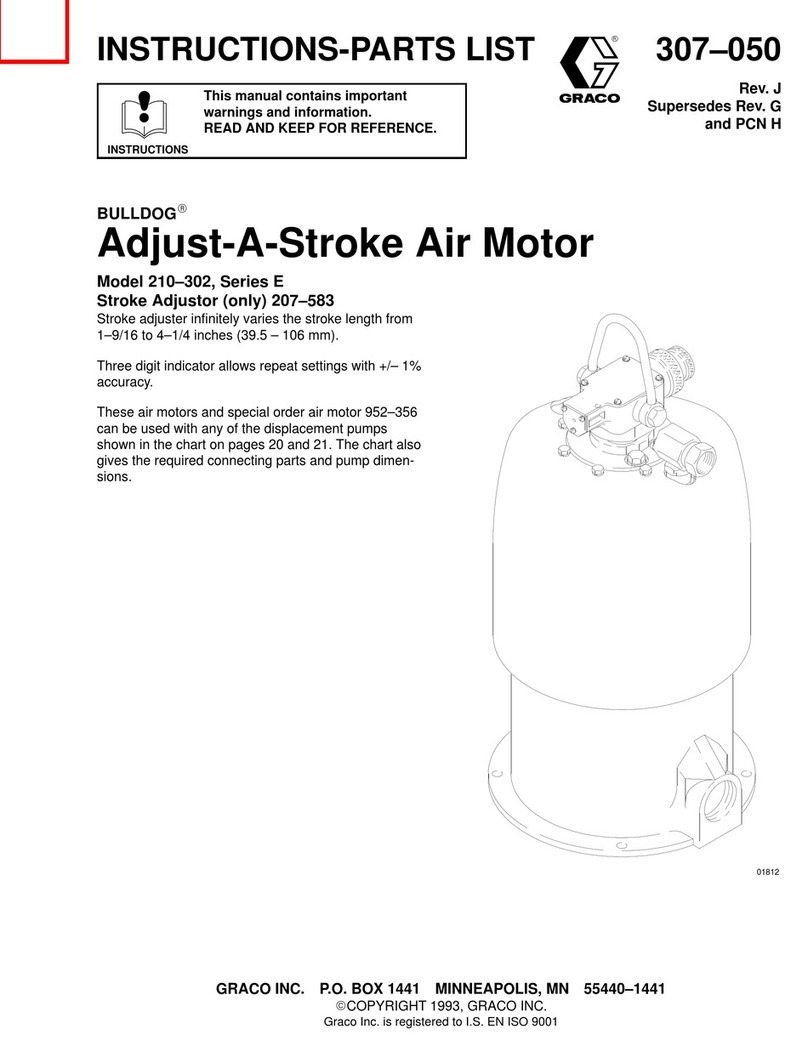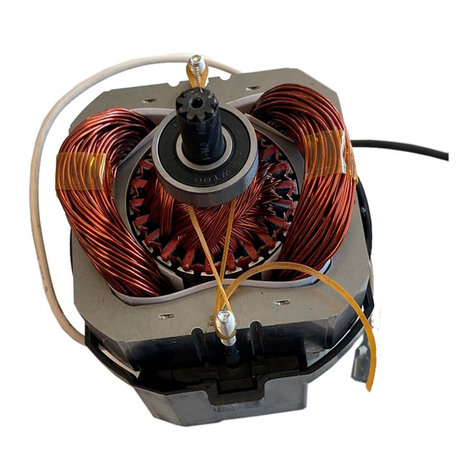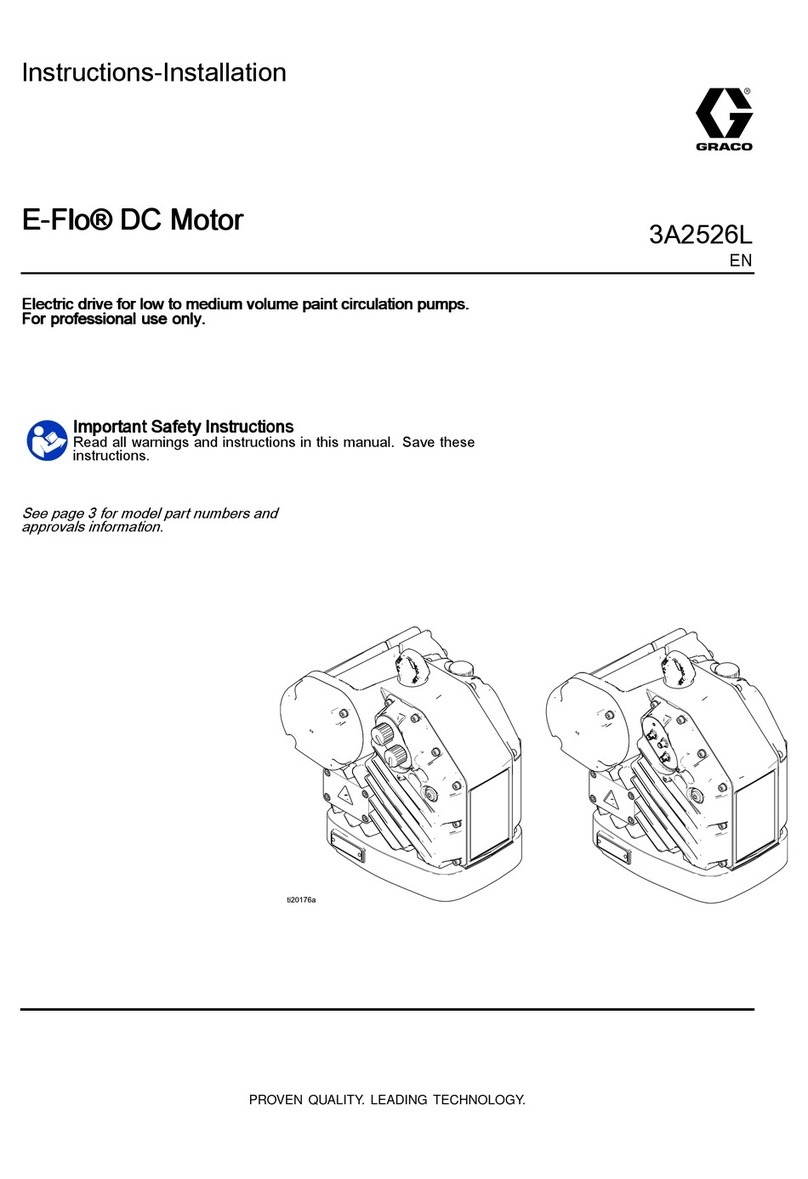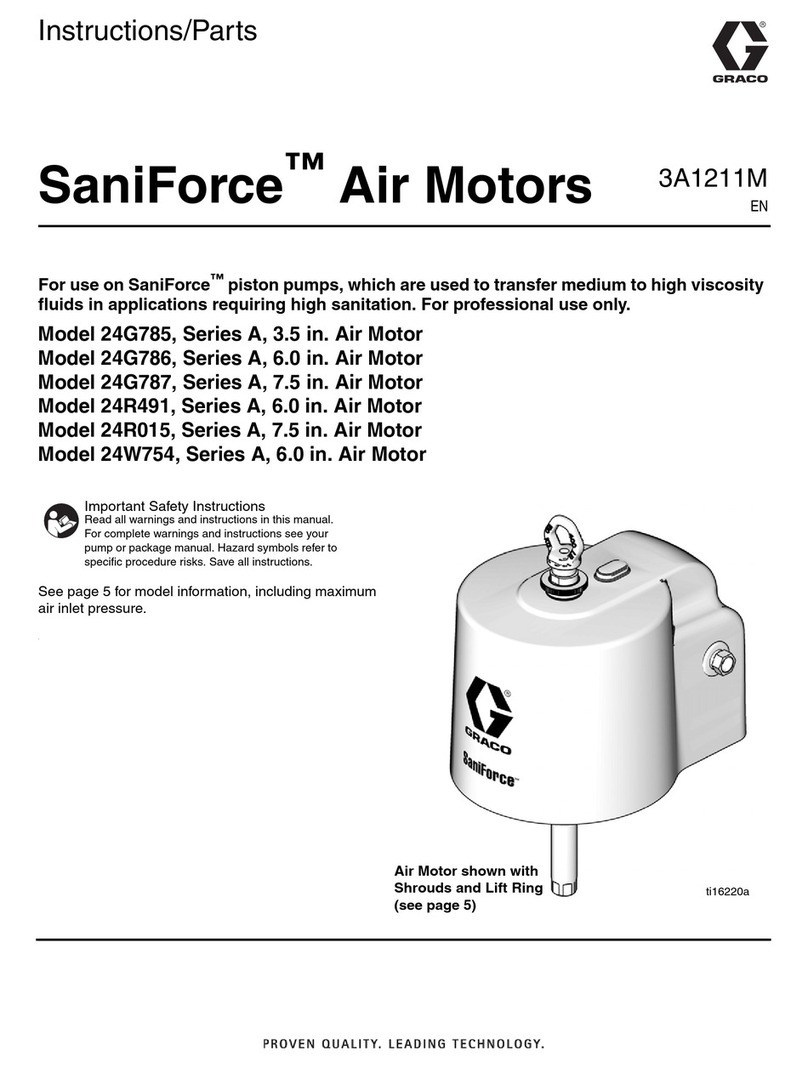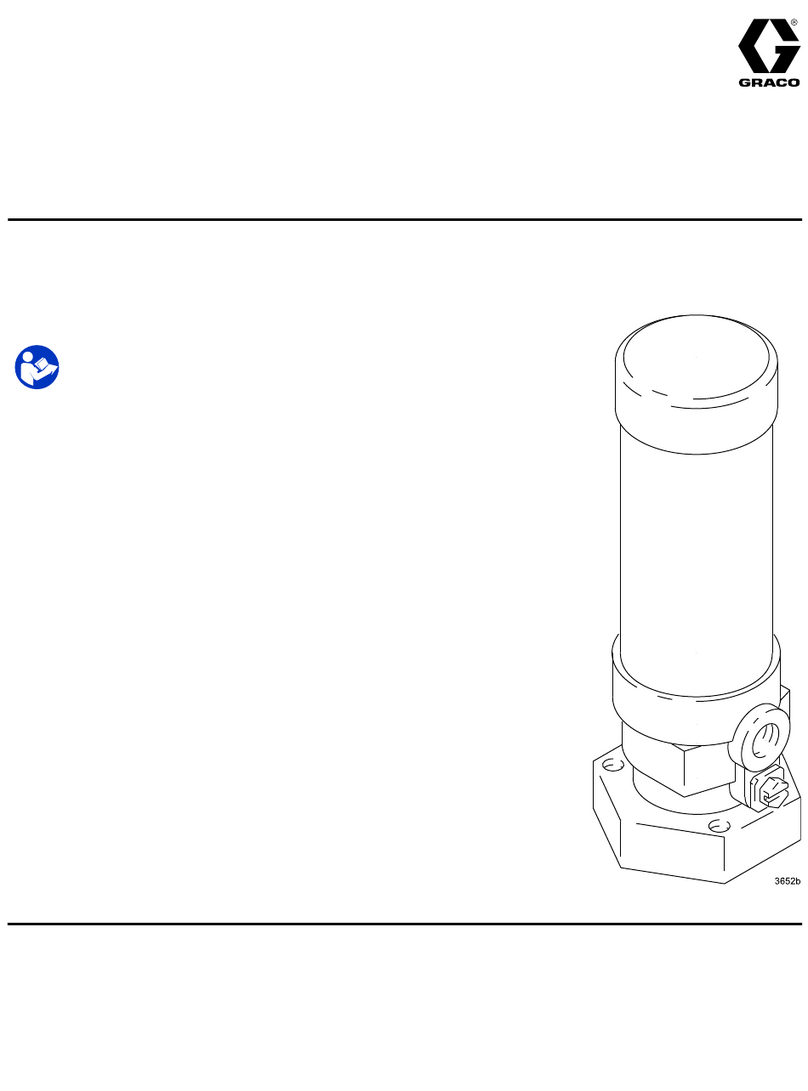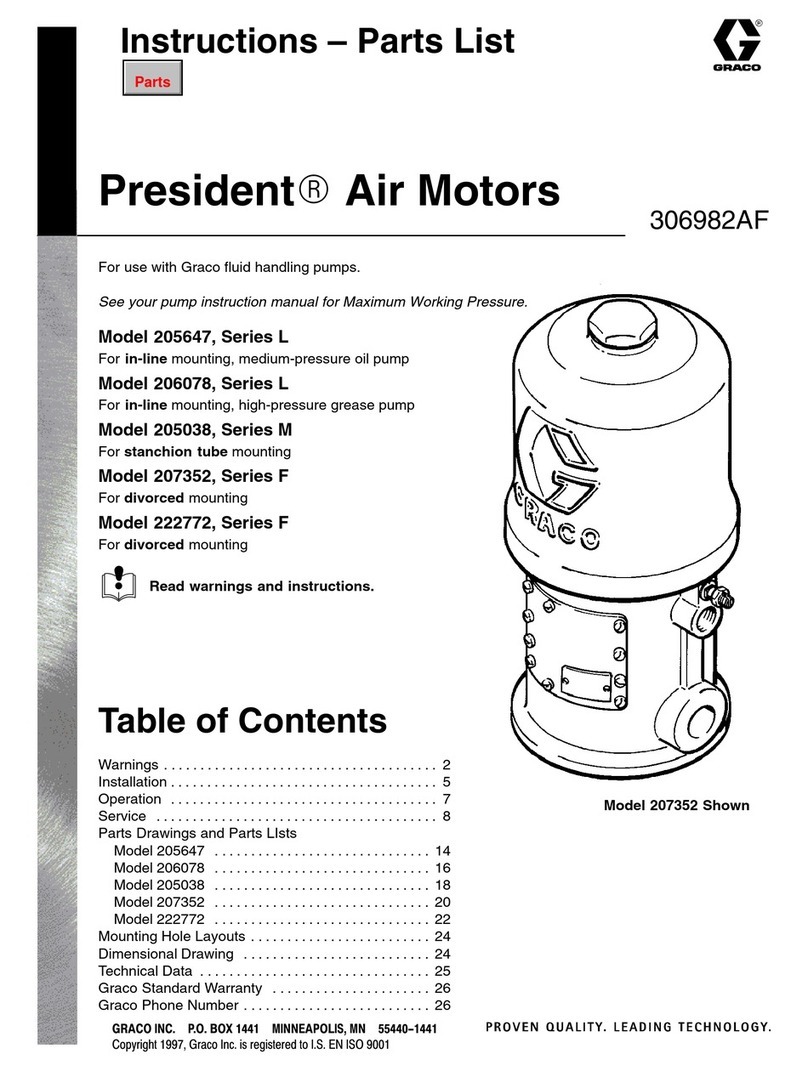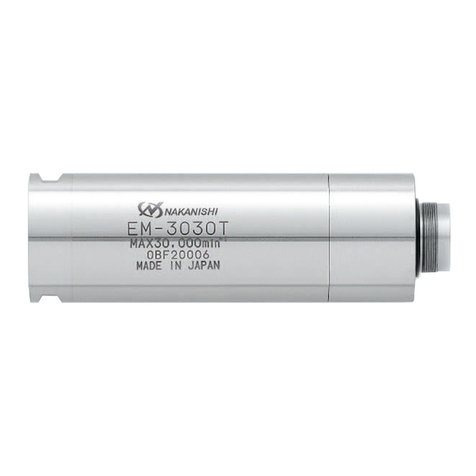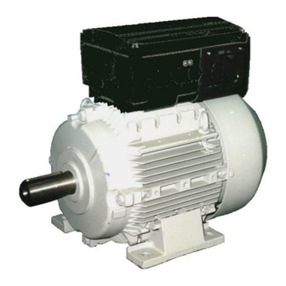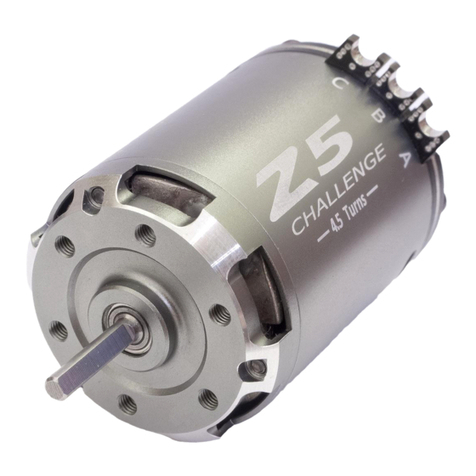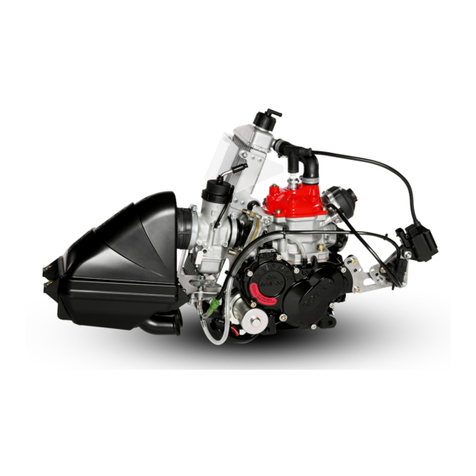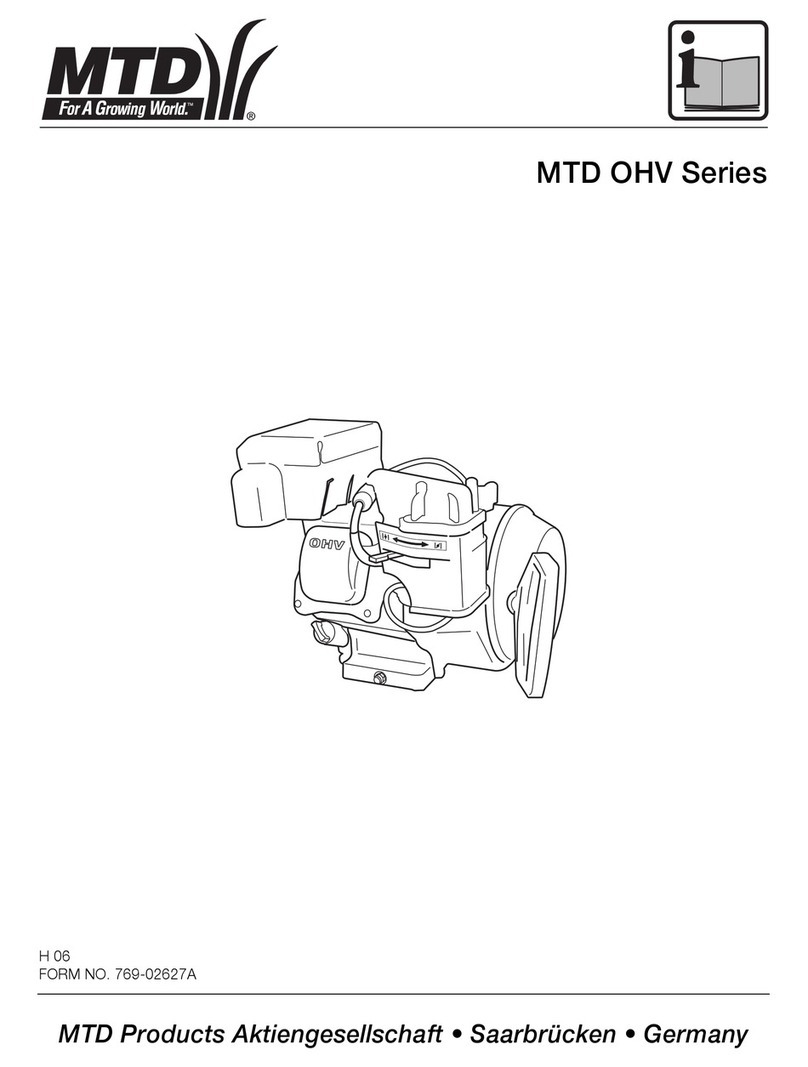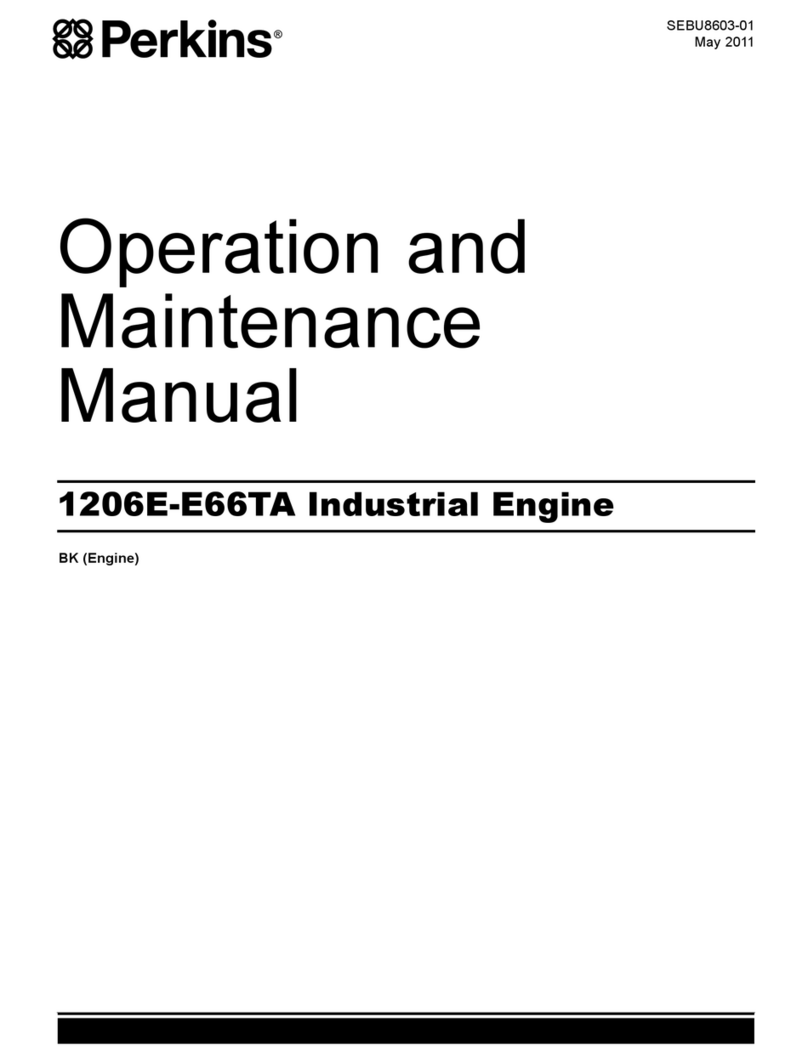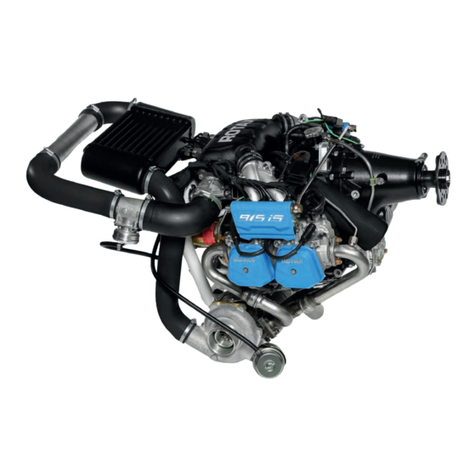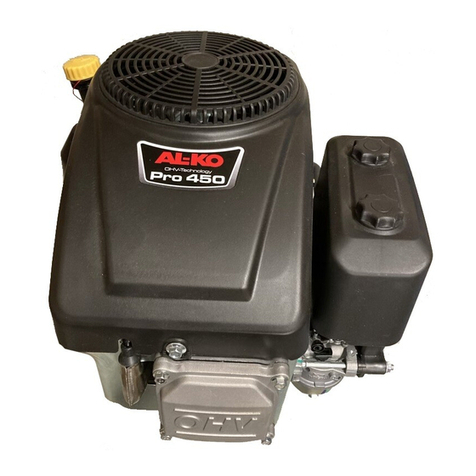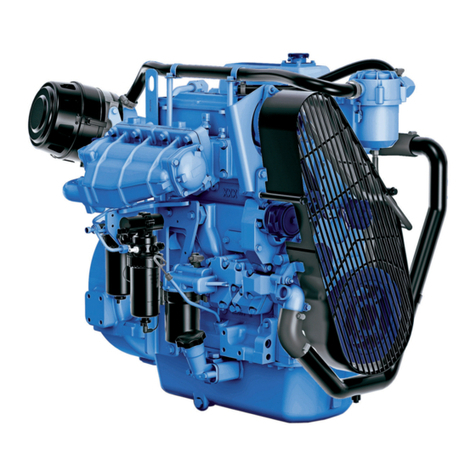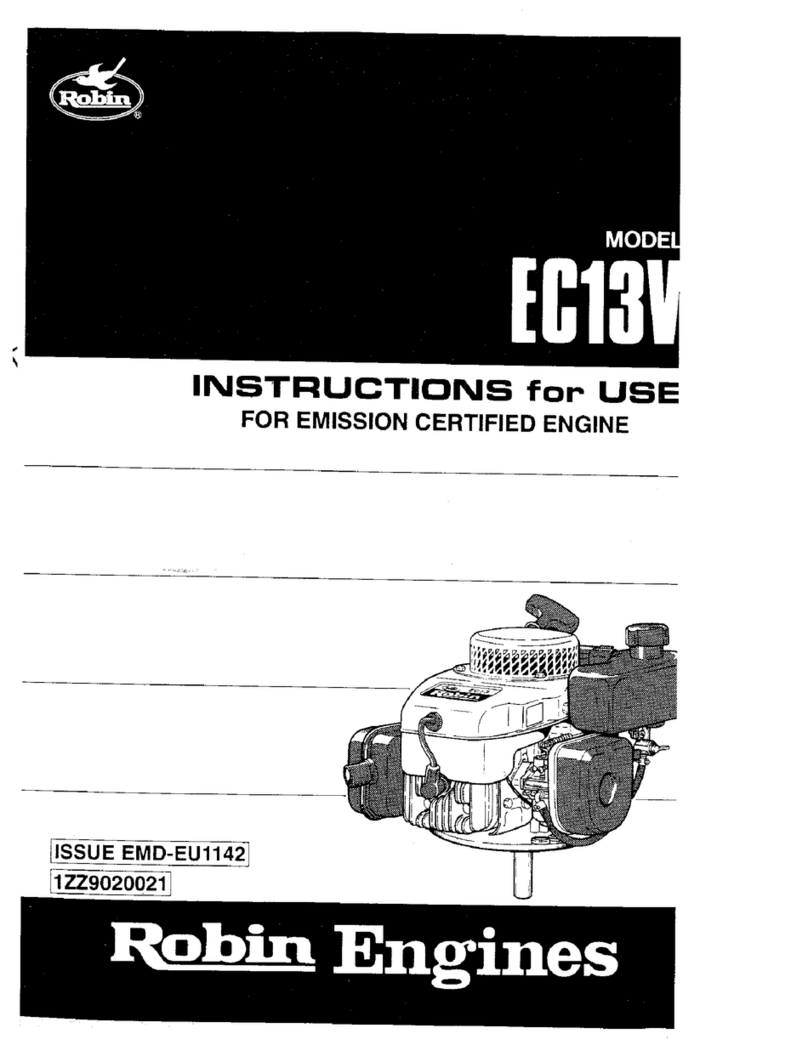
5307157
Service
Pressure Relief Procedure
WARNING
SKIN INJECTION HAZARD
Fluid under high pressure can be in-
jected through the skin and cause seri-
ous injury. High –pressure fluid from
gun, hose leaks, or ruptured components will
pierce skin. This may look like just a cut, but it is a
serious injury that can result in amputation. Get
immediate surgical treatment. To reduce the risk
of an injury from injection, splashing fluid, or mov-
ing parts, follow the Pressure Relief Procedure
whenever you:
are instructed to relieve the pressure,
stop spraying/dispensing,
check or service any of the system equipment,
or install or clean the spray tips.
1. Engage the spray gun safety latch.
2. Turn off the air to the motor.
3. Close the bleed-type master air valve (required in
your system).
4. Disengage the gun or dispensing valve safety
latch.
5. Hold a metal part of the gun firmly to a grounded
metal waste container, and trigger to relieve the
fluid pressure.
6. Engage the safety latch.
7. Open the pump drain valve (required in your
system), having a container ready to catch the
drainage.
8. Leave the drain valve open until you are ready to
spray again.
If you suspect that the spray tip or hose is completely
clogged, or that pressure has not been fully relieved
after following the steps above, very slowly loosen the
tip guard retaining nut or hose end coupling and relieve
pressure gradually, then loosen completely. Then clear
the tip or hose.
WARNING
A bleed-type master air valve is required in your
system, to reduce the risk of serious injury includ-
ing injury from moving parts if you are adjusting or
repairing the air motor.
The bleed-type master air valve relieves air trapped
between this valve and the motor after the air
regulator is shut off. Trapped air can cause the
motor and pump to cycle unexpectedly. Mount the
valve close to the pump, downstream from the air
regulator.
WARNING
Never operate the pump with the air motor plates
removed. The piston in the air motor, located
behind the air motor plates, moves when air is
supplied to the motor. Moving parts can pinch or
amputate your fingers or other body parts.
Restarting a Stalled Motor
WARNING
To reduce the risk of serious injury whenever you
are instructed to relieve pressure, always follow the
Pressure Relief Procedure on page 5.
CAUTION
Never exceed 180 psi (12 bar, 1.2 MPa) air supply
pressure to the air motor. Exceeding this pressure
may cause the air motor to stall with the air transfer
valves stuck at mid position, making the air motor
inoperative.
To reseat the air transfer valves and restart a stalled
motor, relieve the air supply pressure to the motor by
closing the bleed-type master air valve. If the air
transfer valves fail to reseat, screw the cap nut (24)
out of the cylinder (22), pull up on the trip rod (30) and
screw the cap nut back into the cylinder. See Fig. 2.
Be sure the air supply pressure is less than 180 psi (12
bar, 1.2 MPa) before opening the bleed-type master air
valve.
